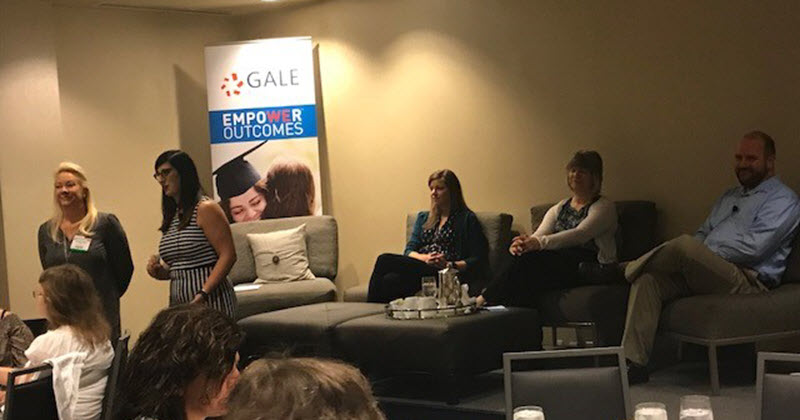| By Lemma Shomali, Product Director, K-12 |
“How are others teaching digital students to use technology as a tool instead of a toy?” “What about effectively collaborate with teachers to support the curriculum?” These are just some of the questions we set out to answer when we decided to host a panel at the AASL National Conference.
More importantly, we wanted the educators who attended our session to be inspired. To get something out of the event that they could take back to their school. Even if it was something small, we wanted to be the catalyst for a ripple effect.
In order to accomplish this, we knew we needed some help from the field. So, we invited three innovative and diverse librarians to help us answer these questions and more. Their responses were so empowering that I wanted them to live beyond the event. I wanted all of our customers to benefit. So, here it goes…
How do you advocate for the library?

Len shocked us but declaring that in fact he doesn’t advocate for the library! He shared “Advocating for students aligns our messages and our mission to those of our campus and our district. Universally, educators want our students to be successful – to attain the knowledge and skills that they need to successfully move on to college, career, and a happy life after school. If we believe the school library can contribute to those essential goals of education, then advocating for our students instead of our program (and by extension, ourselves, which is never pretty), means everyone wins.”
Why shouldn’t we assume students are digital natives?

Katie learned a lot after going 1:1. Starting with devices everywhere, she quickly had to pull back to fill hardware with good, quality content to facilitate technology as an educational tool. Students learned so much that many came back to get her support finding that “Gale thing” they used in high school – only to discover most had access to similar Gale resources in college.
Len added that librarians and teachers have something to bring to the table. He advised that students may be the masters of Facebook and Snapchat and games, but librarians are there to help them understand research, validation, and circumstances of use – using technology for education, not as a toy.
How do you collaborate with teachers and students?

Lori said staying at the forefront of the curriculum is all about building relationships with faculty, and letting word of mouth be your friend. Begin by getting one teacher or department on board so they can be your ambassador and help you outreach to others.
Katie commented that it all starts with the 10-minute pitch. If a teacher will only give you 10-minutes in their classroom, then give them exactly what they asked for in exactly that amount of time. Then, you can slowly add more time as you build trust. Make the most of what you do get instead of looking at what you don’t get.
Wow. And I mean, wow! The passion and energy our panelists brought to the table was nothing short of inspiring. As I moderated the session, I could see across the room how engaged people were with the speakers – listening, taking notes and sharing experiences. They were empowered, and they were going to go back to their school and make some ripples. Mission accomplished.秋服 メンズ特集!2020年の最旬コーデに取り入れたい狙い目アイテム13選 , メンズファッションメディア

